Love Lane Lives
The history of sugar in Liverpool and the effects of the closure of the Tate & Lyle sugar refinery, Love Lane
What is Industrial Sugar?
» Click here for the interview with Bobby Austin, former Tate & Lyle employee
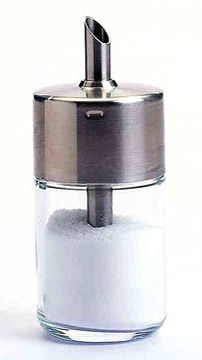
'Industrial' Sugar
Who doesn't love sweet things? Surely humans have a "natural" pre-disposition towards sweetness? The answers to our website’s first bitter sweet questions are "not many" and "yes, but"! The "but" is there to remind everyone that genetic yearnings for sweetness were satiated for millennia without the white stuff. Sweetness should not be conflated with sugar because it is found in many sources and was appealingly available millions of years before the latter was termed "white gold" in the seventeenth and eighteenth centuries. It was in those centuries of colonies and warfare that it also became known as the quintessential slave crop.

Sir Eric Williams
Our taken for granted everyday commodity has behind it this infamous history and the former Prime Minister of Trinidad and Tobago, and former Oxford don, Sir Eric Williams declared in 1944, that it was "strange that an article so sweet…should have occasioned such crimes and bloodshed". Biologically we do not need this pure concentrated sugar and for millennia mankind did without. It is want not need, wealth not health which has provided the main drivers behind sugar’s global expansion.
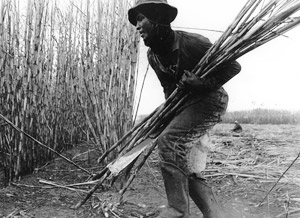
Sugar cane farming by hand
How do you get from "giant fibrous reeds" sometimes fifteen feet in height, and flourishing on thousands of acres of land, "to the delicate fine, pure white granular food and flavouring we call sugar"?
Sugar in its pure white chemical form is shorn of any other nutrients other than its basic carbohydrate building blocks and is technically termed sucrose. It is a pure chemical derived from a long complicated, purging, laundering and refining process which by its very nature is INDUSTRIAL not natural. Plants photosynthesise and make "sugar" in nature’s laboratories which while undoubtedly "natural" does not to my knowledge result in sugar granules growing on plant leaves! The granules and cubes are made in "temples of applied science" called sugar refineries and that has much more to do with capitalism than nature!
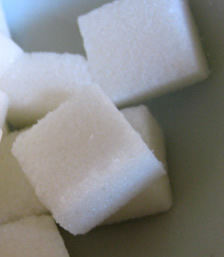
Henry Tate's convenient sugar 'cube'
Given that the bible was a land of milk and honey not sugar and spice the granular stuff is a relatively new kid on the sweetener block. It is capitalism’s "favoured child" according to the Cuban anthropologist Fernando Ortiz and the chronology of the former, roughly the last five hundred years, is a reminder that for millennia our pre-disposition towards sweetness was satisfied without granules or indeed sugar cubes which Henry Tate brought to the world in the late 19th century. Tropical cane is the start of the sugar story and goes back at least to Papua New Guinea, 9000 years ago!
Subsequent migrations are fascinating for specialist sucrose historians but sugar cane and sugar’s rate of diffusion by post Columban standards was distinctly unimpressive. Henry Hobhouse summed up those earlier periods as providing only "a mere pinch per head for the whole of history". The Big Sugar bang was distinctly Columban which is why in my "big sweep" reading of sugar’s migrations and diffusions Christopher Columbus’s second trip to what is now Haiti and the Dominican Republic in 1493 was the "historical breakpoint". By taking sugar cane from the islands off the coast of Africa to the more propitious lands of the New World Columbus kicked off Sugar Cane Time and globalisation long before the G word became common currency. 1493 also marks the beginnings of Europe as "the monstrous shaper of world history", and the massive phenomenon of global change, involving the movement of people, plants and diseases. Aggressive European colonial expansion dominated the centuries that followed.
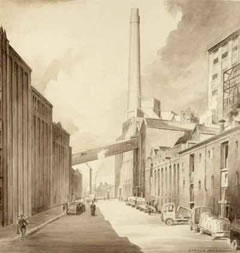
Tate & Lyle Refinery, Love Lane, Liverpool
So when we look at those giant fibrous reeds swaying in tropical breezes the question asked above bears repeating. What has it taken to transform the sugar cane on thousands of acres of tropical land into the "delicate fine, pure white granular food and flavouring we call sugar"? What about all those thousands brought to the Caribbean to grow, cut and grind sugar cane? That was the first and most infamous stage in the production of "industrial" sugar?
Sugar and its history reveals so much about that wider world "entailing as it does a lengthy history of changing relationships among peoples, societies and substances".
Like it’s father capitalism the sweet progenitor has been a revolutionary force in human history ever since and not simply in terms of diet. The Australian economic historian Higman suggests that there is no other crop which justifies the term "revolutionary" in the same way as sugar does. Indeed in the middle of the 17th century there was a "sugar revolution" on an island in the Tropical Antillees, smaller than the Isle of White which had massive global implications. It was the means by which people unknown to each other were being linked through space and time, ensuring that "plantation" sugar production in Barbados had ripple effects right across the Atlantic Ocean to a hitherto insignificant fishing village in the North West of England.
Adjacent to a hitherto much under-utilised "pool" that village was revived by sugar and slaves and experienced transatlantic take off in the eighteenth century. Surprising to think that Liverpool for the previous four hundred years had been eclipsed by nearby Chester.
Sugar Cane was the only commercial source before the arrival during the Napoleonic Wars of the heavily subsidised but inferior solar energy collector, sugar beet. What had previously been the demesne of tropical agriculture became the husbandry of temperate growers in the rich industrialising world of Europe. Governments there would have no compunction in protecting and subsidising their agriculture from the colonies that they had previously exploited for the cane. The era of the European beet boys dates from Napoleon.
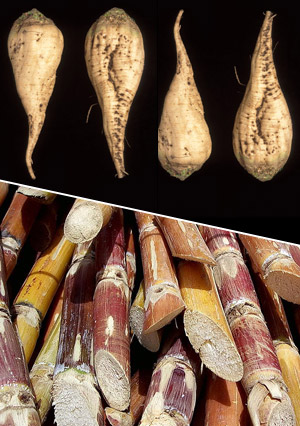
Sugar Beet & Sugar Cane
Historically then sugar cane and sugar beet represent the two most important commercial members of the sugar and sweetener group. They are very different plants with distinct histories and temporalities although after processing and refining, the sugar produced from both is actually identical. This is a key point to remember for anyone wishing to understand the "sugar wars of the 20th and 21st centuries"!
The cane thrives in tropical or semi-tropical climates, predominantly in the Third World, whereas sugar beet can only be grown in the world's temperate and largely First world zones. Tony Hannah points out that "Sugar cane is a grass of the genus Saccharum which grows in the tropics, roughly between latitudes 35 N and 35 S. In certain places it grows outside that belt, but it is usually found within the area where palm trees grow." Ironically, sweetening tea or coffee from a bowl on the table without knowledge of the packet it was in, would make it impossible to know where the granules had originated from. They could have originated in the exotic sounding Lesser Antilles islands where Christopher Columbus introduced the crop on his second journey to the Caribbean, or in East Anglia; from the sugar cane brandishing "its sword like leaves in the tropical sunshine" or the drab "mangel-wurzel" sugar beet in wet Fenland England.
Beet sugar processing has now been around for nearly two centuries. Import substitution of the beet for the cane was given a major boost by the British blockade of trade with France during the Napoleonic Wars. Its production grew rapidly then throughout Europe in the nineteenth century. According to Sidney Mintz it represented "the first important seizure by temperate agriculture of what were previously the productive capacities of a tropical region". Despite advances in the wet milling of maize and the production of High Fructose Corn Syrup, the basic business fact still is that cane and its rival, beet sugar, are the two most important commercial sources of sweetness today.
In our "naughty but nice" era of fast foods and processed profits our predilection towards sweet things is exploited by food companies with massive lashings of "invisible sugars". They derive from cane and beet, from HFCS, and also from the sweeteners made in laboratories which claim to be "calorie" free. These invisible sugars are designed to make their products more palatable and it is a startling fact that two thirds of our intake today is indirect. We may not be putting the visible two or three spoons into our beverages on health grounds but sugars are laced into fast foods. The warning then is that in our grazing and snacking world, where so many of us are short of "time" deliciousness is decidedly not a good nutrient detector!
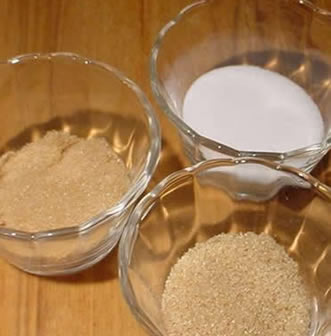
white sugar, caribbean washed grey, american brown
Unlike when our ancestors associated sweetness with good and bitter with bad there is so often in the 21st century a marked disparity between palatability and nutrition. Sugary foods need to be treated with caution and critics not dismissed as "food faddists" because they warn of a diet chockfull with calories that we don’t need. We all have to be more careful with our intake of sugar because it plays havoc with our moods and energy levels. Too much consumption is akin to a rollercoaster ride of highs and lows because it is ingested very rapidly unlike products containing other nutrients than the "empty carbohydrates" which define "industrial sugar".
When a sugary food is consumed it travels through the digestive system faster than the fruits which we vaingloriously exhort our children to eat. Unsurprisingly sugar stimulates the brain to produce what are called "happy hormones" and messages are rapidly sent to the pancreas which prompts it to release the hormone insulin that transfers the sugar from the blood to the body’s cells. It is all too fast and frenetic and unfortunately can all too easily become achingly addictive.
When the sugar is in the cells it is used immediately to fuel activity or it is stored as fat and overeating caused by enormous quantities of invisible sugars pushes so many people towards obesity and diabetes.
Fat is broken down when the body later needs to produce a spurt of energy but the trade off between fat and sugar ought to be seriously bore in mind when "low fat" foods are being advertised. That invariably means more sugar!
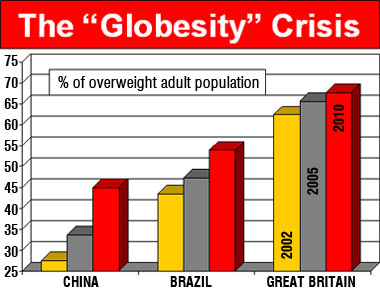
© Icon Health & Fitness
How ironic that in our globalised "one world" we now have more deaths from overeating than hunger? How appalling that the sugar coated phrase "disease of affluence" should be a used to describe the impact that obesity has on so many of our Western lives? A government scientist recently described this toxic environment as "obeseogenic", and at the same time another new word has been shoehorned into the lexicon, globesity! Yes we should all regard sugar as a treat and recognise that regular cravings for sweet things are best served by fruit but up against the power and structures of the food industry (sugar’s best friend) exhortations that fruit sugar with plenty of fibre, vitamins and minerals is best is rather like Canute trying to turn the sea back!
Bobby Austin from CheapSkate Design on Vimeo.